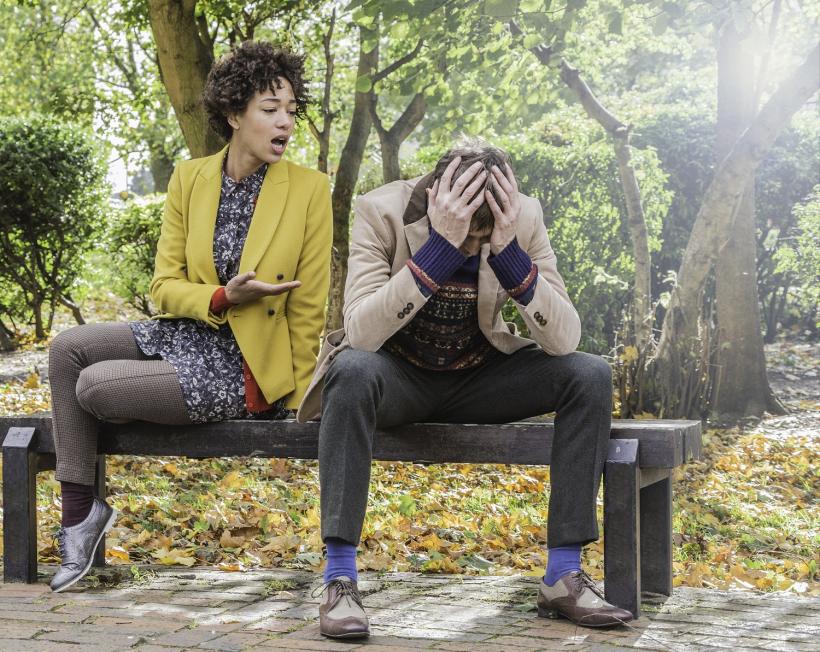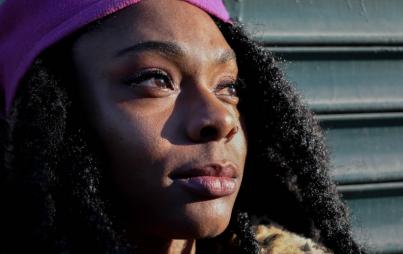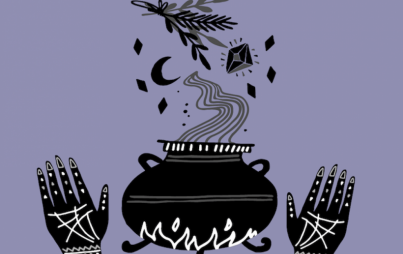
Recognizing your biases really just means recognizing that white supremacy has an impact on you — just like it does on all of the rest of us. Image: Thinkstock.
Originally published on Everyday Feminism.
My favorite comedian duo, Key and Peele, once joked that “‘Racist’ is the N-word for white people.”
While this phrase is highly problematic, as there is no white N-word equivalent, I can’t think of anything I could say that would piss off my white friends and associates more than to call them racists.
Call someone racist, and they’ll clutch their pearls and pull out a rolodex of friends of color who can vouch for their “wokeness.”
They’ll explain how they’re not voting for Trump, how they love diversity, and how they cannot stand to stay in the room when they go home for Thanksgiving and their old Great Uncle Jack gets to talking about the problems with “the coloreds.” They’ll admit they have older racist relatives, but they won’t dare have you thinking that they are anything like those relatives.
This reaction is pretty understandable. Other than proud white supremacists like Great Uncle Jack, who really wants to be called racist?
But many people are racist without even realizing that they are. This is because many of us have a skewed image of what a racist looks like.
Everyone tends to picture an older generation of folks who are card-carrying members of the KKK from the deep south who proudly wave confederate flag, still use the N-word, and keeps mammy figurines in the window sills of their homes.
We think of these folks as the small percentage of the population that is dying out.
If you haven’t experienced racism first hand, then it’s hard to think of yourself, your coworker, gym buddy, neighbor, or favorite pop star (ahem, Taylor Swift fans) as a racist.
They may not enjoy wearing white hoods and publicly promoting white supremacy; however, there are several types of racists can be just as dangerous as, if not even more dangerous than, Great Uncle Jack.
Here are 3 types of racists that are even more dangerous than the typical image of a racist.
Do you fall into any of these categories?
1. The ‘Politically Correct’ Racist
The politically correct racist can be a tricky one to detect because they say things that sound helpful and progressive. The most well-meaning people sometimes fall into this category.
PC Racists say things along the lines of “we are all one,” “we are all the same,” “there is only one race — the human race) and “#AllLivesMatter,” whenever people of color speak out about racism in our society.
Yes, we’re all human and we want everyone’s life to matter, but PC racists jump the gun a bit.
We can’t hold hands and sing “We Are the World” or “Kumbaya” until we are all actually treated like equal human beings.
Colorblindness is not the answer to our problems. Applying a blanket “we all matter” approach to issues that impact a specific portion of the population is the not the answer. Seeking out similarities and ignoring differences is not the answer.
These “solutions” only sweep social issues under a rug, so we can think that the problems have been eradicated. They actually contribute to the issue more than they work to solve it.
Instead of confronting the people and systems in our society that discriminate based on race, the PC Racist demands that the very people experiencing racism be inclusive of their oppressors.
PC Racism can feel comfortable when it means you get to avoid confronting oppression. Sweeping things under a rug doesn’t take as much effort as actually doing something about the mess our country has created because of its racist ideology.
But the easy way out isn’t always the best way — especially when people’s lives are at stake.
PC Racists need to understand that those difficult conversations about race must happen in order for us to put together plans to combat and solve these problems.
Instead of PC Racism, people should step a bit out of their comfort zones to listen to the concerns of people of color and find ways to support their causes without refocusing the attention on themselves.
2. The Nationalist Racist
The nationalist is also sometimes difficult to detect because their racism is slightly hidden by its patriotic sentiments.
For example, one day at my previous job, I overheard our CEO say something along the lines of: “I don’t think immigration is a problem. But when people come here, they should adopt American culture because this is America.”
If you think like my former boss, you might be a nationalist racist.
Nationalist racists think of America as White America, and have little tolerance for the diversity in our country.
They want to “Make America Great Again,” and go back to a time when white supremacy wasn’t as challenged. They don’t acknowledge that the “great” American past was only great for white, cisgender, able-bodied, heterosexual men.
The rest of us don’t have the luxury of time travel, and prefer to look forward to a future where black kids can walk around without fearing the police, where federal agents aren’t busting into people’s homes to kick out undocumented families, and where Asian Americans aren’t constantly asked, “But, where are you from originally?”
A nationalist racist is only patriotic for White America, not the beautifully diverse nation our country has been for a good portion of its history. Their patriotism is rooted in xenophobia and white supremacy.
These types of racists view diversity and the influx of people of color in our nation as a problem. They blame people of color for street violence, terrorism, our nation’s economic problems, and more, according to the stereotype they’ve created about each particular group.
Rarely do they point fingers at the problematic past and present ways our nation deals with people of color. Instead, they deny our country’s poor decisions of the past, including slavery (and the brutality of it), the relations with American Indian tribes, internment camps, and more.
And they deny the current problems that these missteps of the past have created.
Nationalist racists are dangerous because they have such a problem with other culture that many of them will pass laws to restrict expression of various cultures.
Within the past year, they’ve outlawed natural black hairstyles in school dress codes and in the military. They’ve removed innocent passengers from planes for wearing hijabs.
And a good percentage of them would go so far as to elect a president who would build a giant wall and restrict immigration in order to keep out people who don’t look like them or share their culture.
But there are ways to be a patriot without being a racist. You just have to accept that not everyone in our country looks or thinks the way you do.
Embrace that the US is made up of a diverse group of people.
3. The ‘Bootstraps Pulling’ Racist
Similar to the nationalist racist, the Bootstraps Pulling Racist is also patriotic.
They are pro-America in the sense that they believe in American principals such as “Education is the Great Equalizer” and that this is the “land of the free,” and that everyone has access to the American Dream if they “pull themselves up by their bootstraps” (no matter how illegitimate these principles may be).
They believe that everyone has an equal opportunity at success in this country as long as they work hard.
This type of racism isn’t surprising, since working hard and pulling oneself up by their bootstraps is an old American tale.
Americans love a good success story. We cherish rags to riches tales. We love hearing about people reaching the “American Dream.”
But what many people don’t realize is that some of us start off ahead of others in the race toward the American Dream.
Various forms of privilege make it easier for some folks to move ahead, while others have to work harder to make up for the forms privilege they don’t have.
What Bootstraps Pulling Racists don’t recognize is that being white is a huge privilege in this country. And that whiteness is sometimes paired with other privileges that help people succeed in the US.
This type of racist thinks that because there is no slavery or Jim Crow anymore, the US is now a just country. They don’t acknowledge the institutional oppression or structural racism that came from this nation’s historical struggle with accepting people of color. They don’t recognize that this oppression inhibits people from reaching success.
The bootstraps ideology simply works to oppress people by suggesting that those of us who are not living the American Dream are simply lazy or not working hard enough.
Bootstraps Pulling Racists think that if people tried harder, they all would have a fair shot at the American Dream. They think that if people tried harder, they would not face police brutality, discrimination in the workplace, marginalization in the entertainment industry, poverty, and more.
These types of racists are dangerous because they don’t think our country has a race problem. They want to continue with the status quo.
However, many of us cannot live with “business as usual.”
We see people who look like us gunned down by the police too frequently. We see our peers constantly passed up on professional opportunities because of discrimination and glass ceilings. We see families broken apart because of mass incarceration. And we see friends living in fear because of their citizenship status.
We don’t have the privilege that grants us the ability to allow the status quo to continue. Bootstraps Pulling Racists promote a climate that isn’t safe for many of us to live in.
In place of “bootstraps” racism, people should learn more about their privilege and understand how it influences their access to certain opportunities that others may not have.
♦♦♦
Uncle Jack and his old Klan buddies aren’t the only racists in the US.
There’s a huge percentage of the population that holds racist views and doesn’t even know it. You might have racial biases, and it’s important for you to know what they are.
So if someone calls you a racist, and you go out of your way to prove that you aren’t — rather than analyzing the way in which you might have offended that person — then it’s probably time for some reflection.
It might helpful to think about or even ask why that person thought what you said or did was racist. You may learn something you didn’t know before.
By doing this, you can become the Anti-Racist Racist — the person who acknowledges their racial biases and works to release them.
If we really wanted to make America great, this is one good way to start.
Common ideas of what a racist looks like can make this feel difficult, because you might think admitting to racial biases means admitting to being a “bad” person.
But really, it means that you’re still learning about social justice — as we all are — and that you’re unlearning many commonly held untruths which you were previously taught to believe.
And if you’re concerned for the sake of the people of color in this country, and you really want the “liberty and justice for all” that we almost always rush through at the end of the Pledge of Allegiance, then you’re not a bad person.
You know that. And your Old Uncle Jack knows it, too.
Recognizing your biases really just means recognizing that white supremacy has an impact on you — just like it does on all of the rest of us.
People’s racial biases impact the feeling of an environment, and in our case, an entire country. They can make some folks feel welcome in certain spaces and some feel unsafe in the same environment.
The Anti-Racist Racist works to ensure that they are part of the solution when it comes to making our country more accepting of people of color.
So next time someone calls you a racist, take your Anti-Racist Racist approach and silently thank them for pointing out how you might have a bit more work to do when it comes to getting rid of those biases of yours.
Shae Collins is a Contributing Writer for Everyday Feminism. She enjoys educating and uplifting by aiming a black feminist lens at pop culture on her blog, awomynsworth.com. She’s been published in Ms. Magazine, For Harriet, and Blavity. Laugh with her on Twitter @awomynsworth.






